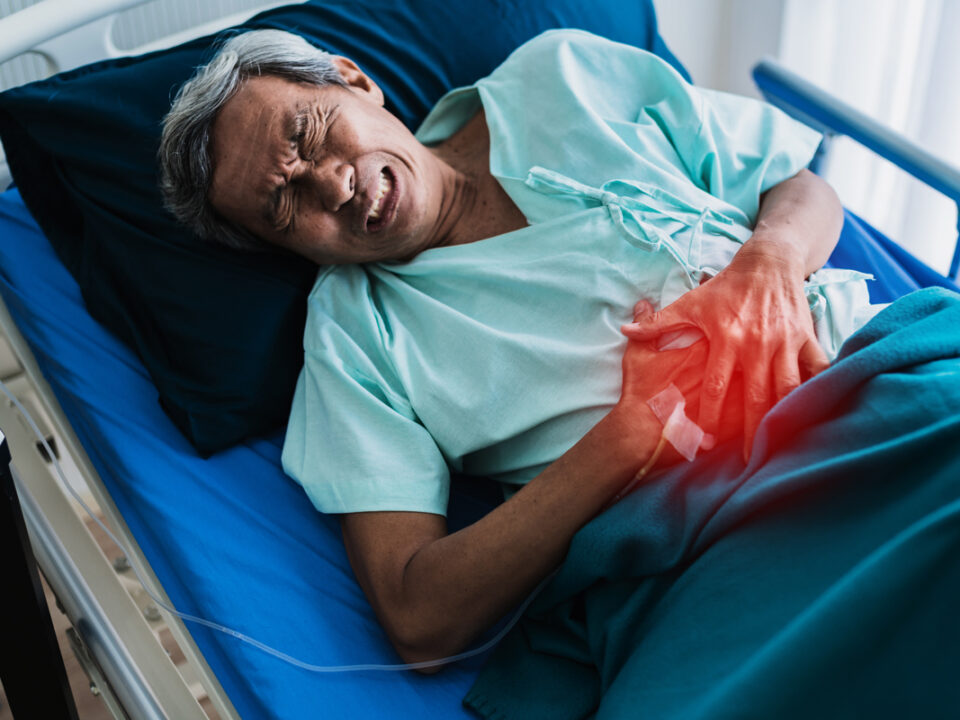
Hyperbaric Oxygen Therapy and its Anti-ageing Effects
18/01/2024Alzheimer’s disease is a progressively impairing disease of the brain and the most common cause of dementia. It is a general brain condition encompassing memory loss, decreased thinking and decision-making capacity, and a general difficulty in performing routine activities. It generally occurs in elderly people aged over 60. Multiple medications are being used for Alzheimer’s disease but almost all of them delay its progression and none reverse its debilitating effects. A new modality of treatment that is showing promising results in research to reverse the effects of Alzheimer’s disease is Hyperbaric Oxygen Therapy. This is what HBOT India has to say.
What is Hyperbaric Oxygen Therapy?
Breaking down the constituent words: Hyper means “increased” and baric means “pressure”, Hyperbaric Oxygen Therapy simply means treatment that involves providing 100% pure Oxygen at high pressure (about twice or thrice that of normal pressure in air).
It is a new and promising method of treating many conditions in which conventional methods of treatment have failed to adequately treat the condition & in those where lack of oxygen might be one of the causative factors. Hyperbaric Oxygen Therapy can overcome the shortage of Oxygen abruptly thus proving efficient in the treatment of such conditions. One such condition for which Hyperbaric Oxygen Therapy is an emergent option is Alzheimer’s disease.
What is Alzheimer’s disease?
Alzheimer’s disease is a progressive neurological condition that causes the death of nerves and loss of tissue throughout the brain, gradually reducing it in size and significantly affecting all its functions. Its primary target in the brain is an area called the hippocampus which controls memory, thought, and language. This causes early symptoms of Alzheimer’s disease as described below.
What are the symptoms of Alzheimer’s disease?
Alzheimer’s disease begins as mild memory loss, leading to the inability to carry out normal conversations or respond to environmental stimuli. It progresses to impair the ability to think, make decisions, or judge situations accurately. Alzheimer’s disease is usually a disease of the elderly, but it gives early warning signs which help in diagnosing it early. These signs include getting lost in a known place, repeating questions, misplacing things, or developing mood & personality changes.
If you are having these symptoms and you’re under the age of 60, you should know that these are not signs of a normal ageing process, and it’s best to get evaluated by a neurologist, especially if you have a family history of Alzheimer’s disease.
What are the causes of Alzheimer’s disease?
Alzheimer’s disease is attributed to factors related to Age, its associated comorbidity (Infections, Diabetes Mellitus), and the Familial tendency to get the disease. As we age, blood flow to the brain decreases, which leads to less nutrition for the brain cells, decreasing their activity and eventually causing their death. The main culprit in causing Alzheimer’s is perhaps the buildup of amyloid (a protein) plaques, which are sticky and decrease the flow of nerve signals across junctions. Other causes include dysfunction of mitochondria (the powerhouse of cells), and uncontrolled free radicals which cause the death of nerve cells.
According to research, Diabetes is also found to be a risk factor in the pathogenesis of Alzheimer’s due to its effects on vessels, reducing blood flow to brain cells. Age is the most common risk factor for developing Alzheimer’s disease. Patients aged over 65 are at higher risk, with it doubling every 5 years, i.e. patients aged 70, will be at twice the risk than patients at 65 to develop Alzheimer’s disease.
Alzheimer’s disease is also known to run in families. According to research, a person having a variant of Apolipoprotein E (APOE) gene on 19th chromosome renders him/her more susceptible to developing Alzheimer’s disease. Another research suggests having a close relative like a parent or sibling also leaves you more likely to develop Alzheimer’s disease than those without a first-degree relative having this disease. In fact, people who develop Alzheimer’s disease before the age of 60 (3% of total cases) are more likely to have it due to genetic cause (passing of faulty gene APOE).
How is Alzheimer’s disease diagnosed?
Alzheimer’s disease is initially a diagnosis of exclusion. A series of tests are run to rule out other causes of impairment, such as blood tests or imaging tests. Blood tests are run to rule out Vitamin B12 deficiency or thyroid disease. Doctors may also evaluate you for a history of stroke, depression, or Parkinson’s disease to evaluate their role in presenting symptoms. Clinically, the doctor will evaluate your memory, thinking skills, and behavioral changes by Mental status and Neuropsychological tests. The doctor can also interview patient’s friends and family as they are a better judge of symptoms over time than the patient himself.
Sometimes the doctor may evaluate the patient’s Cerebrovascular fluid to look for Alzheimer’s disease-related Amyloid and tau proteins. The ratio of these proteins helps determine if Alzheimer’s disease is present or not.
Imaging scans such as Magnetic Resonance Imaging (MRI), Computerized tomography (CT) scans are used to evaluate the brain. The most useful scan for the diagnosis of Alzheimer’s disease is the Positron emission tomography (PET) scan, which identifies brain areas with decreased glucose metabolism or detects Amyloid or tau proteins.
What are the different treatment options available for Alzheimer’s disease?
Alzheimer’s disease is primarily treated by Acetylcholine Est-erase Inhibitor drugs, i.e. Rivastigmine, Donepezil which decreases the destruction of Acetylcholine, a molecule that mediates signal transmission across nerves by its enzyme. This improves nerve conduction in brain. Another class of drugs is NMDA (N-methyl-D-aspartame) receptor antagonists i.e. Diamantine which prevent release of nerve-damaging calcium ions into nerve cells. These drugs although currently the primary line of treatment work only to slow down progress of Alzheimer’s and none to actually reverse its debilitating effects.
Search for treatment that actually reverses the cognitive impairment caused by Alzheimer’s has led to research on the effects of Hyperbaric Oxygen Therapy, and the results are both surprising and promising leading to a new era in treatment of Alzheimer’s disease.
Role of Hyperbaric Oxygen Therapy in the treatment of Alzheimer’s disease
Hypoxia, or a decreased oxygen flow to tissues, may contribute to the onset of Alzheimer’s disease, according to research. This indicates that hypoxia may be reversed by giving the body oxygen, and hyperbaric oxygen therapy accomplishes just that by giving the body pure oxygen at twice the atmospheric pressure, which overcomes hypoxia and reverses its effects on the brain. Stimulating an increase in cerebral vascular diameter led to a rise in brain perfusion per unit of time, which in turn helped to improve blood flow.
In the beginning, Tel-Aviv University used specialized 5XFAD mice models that received sixty-minute bouts of hyperbaric oxygen therapy. The reduction in amyloid plaque production was as much as 40%, according to scans, which was extraordinary.
Aside from that, there was a total cessation of new plaque development, which was linked to modifications in the processing of amyloid precursor protein.
Additionally, the mice had better nest construction and improved exploratory activity, all of which are signs of enhanced cognitive function.
Due to the effectiveness of the mouse models, researchers began using human volunteers in their studies. Six participants with substantial memory loss who were above 64 years old were included in the study. The study was conducted over the course of three months, with sixty-nine-minute sessions in total. About 2ATA was exposed to each subject, with 20-minute air breaks.
Three months later, the results looked good. Numerous brain regions had enhanced blood flow (up to 23%), according to MRI scans. Cognitive tests performed by the researchers revealed an improvement from an average score of 102 to 109. Additionally, memory tests revealed improvement, going from a prior score of 86.6 to 100.9.
In a different human trial, thirty people served as controls and twelve patients with Alzheimer’s disease received hyperbaric oxygen therapy. For 20 days, patients received a daily oxygen therapy session at 2 ATA pressure and 99.9% oxygen. The patient had follow-up care for one, three, and six months. A one-month follow-up confirmed a prior study’s findings that hyperbaric oxygen therapy does enhance cognitive performance. Nevertheless, follow-ups after three or six months failed to demonstrate this improvement, which may indicate that a single Hyperbaric Oxygen Therapy regimen was insufficient to sustain this improvement. However, the ADL (Activities of Daily Living) score appeared to improve at all 1, 3 and 6 month intervals, indicating that hyperbaric oxygen therapy did enhance patients’ capacity to carry out everyday chores like eating, using the restroom, and moving around, hence enhancing their quality of life.
PET scans performed six months later revealed that numerous brain regions were using more glucose. Because all these benefits outweigh those of traditional medications like donepezil, Hyperbaric Oxygen Therapy is a potentially effective alternative to traditional medical care.
Another study involved people receiving 50-minute treatments five days a week for 66 days at 1.15 ATA, with a primary focus on PET scans of patients receiving hyperbaric oxygen therapy. Finally, PET scans were performed, and the results showed enhanced overall brain metabolism of up to 38% in certain regions. Patients also reported improved memory and attention span after 40 sessions. Improved knee bending and motor speed were shown by physical examinations.
The following characteristics are thought to be responsible for hyperbaric oxygen therapy’s ability to reverse Alzheimer’s disease:
- Increased blood flow to the brain’s tissues by overcoming Alzheimer’s disease-related vascular diameter reduction
- Amyloid tumor reduction through targeting its precursor proteins
- Minimizing Tissue Inflammation in the Brain
- Enhancing mitochondrial dysfunction through abundant oxygen delivery
In India, how prevalent is Alzheimer’s disease?
The number of Indians with Alzheimer’s disease is about 3.7 million. According to the Alzheimer’s and Related Disorders Society of India’s 2010 Dementia India Report, this number is alarmingly expected to double to 7.6 million in the next ten years (ARDSI). Most Indian patients are treated with conventional techniques, which are insufficiently large and inefficient for this patient volume.




